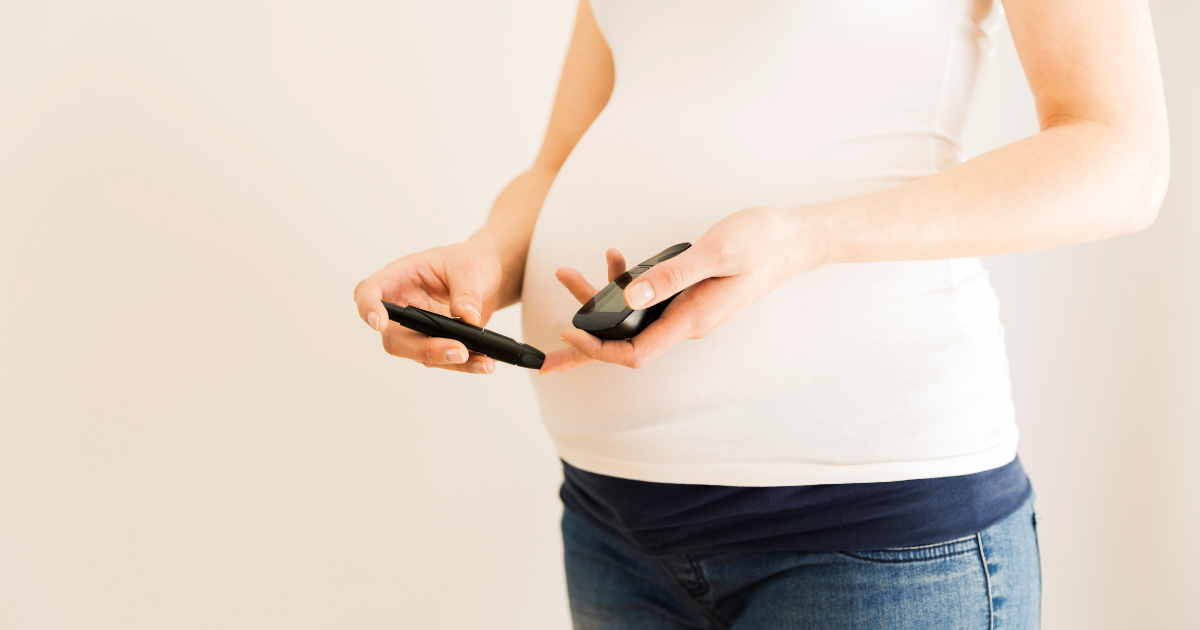About six to nine percent of women will develop diabetes during pregnancy. We spoke with Gretchen Koontz, M.D., M.S., a perinatologist at Maternal-Fetal Specialists in Georgia, to learn more about gestational diabetes (GDM) and understand the ins and outs of this condition.
What is gestational diabetes?
Simply put, gestational diabetes is diabetes diagnosed in pregnancy and is tested for around 24 to 28 weeks’ gestation. GDM risk factors include advanced maternal age, increased maternal Body Mass Index (BMI), high blood pressure, a family history of diabetes, diabetes in a previous pregnancy and pregnancy with multiples. For women without these risk factors, GDM can be linked to the placenta as it releases a hormone that, in some women, will cause the body to reject its own insulin.
Poorly controlled GDM in pregnancy can result in complications at birth such as macrosomia, birth trauma, neonatal morbidities such as hypoglycemia, preterm birth, and even stillbirth. Women with GDM are at increased risk of developing polyhydramnios and preeclampsia, which can lead to preterm birth.
Diagnosing and managing
In the United States, GDM is most commonly diagnosed through a one-hour glucose screening, known as the glucola. Women drink a syrupy glucose solution and subsequently have their blood drawn. If glucose levels are elevated, the pregnant patient completes a three-hour follow-up test for confirmation.
If GDM is confirmed, patients are then advised to check their blood glucose levels at least four times per day and send their results back to their physician weekly for evaluation. Fetal growth evaluations are recommended monthly, and for those women requiring insulin or an oral hypoglycemic agent, antenatal testing is started at 32 weeks.
For many patients, remembering to monitor glucose levels may be difficult. In addition, many people fear needle sticks and blood draws. Given these obstacles, Dr. Koontz is hopeful that the newer glucose sensors and monitors used in the pediatric and general diabetes population will soon enter the market for safe use in pregnancy.
Common myths
- Once a woman delivers, she does not have to test for diabetes again later in life. Women diagnosed with GDM in pregnancy have a higher risk of diabetes later in life. Frequently, the diabetes screen at the six-week postpartum visit is skipped or missed. This can result in undiagnosed diabetes for women after pregnancy.
- Women will know if they have diabetes in pregnancy without the screening test. Dr. Koontz notes that many women with diabetes in pregnancy do not have the same symptoms as those diagnosed outside of pregnancy. “Many symptoms such as fatigue and using the restroom frequently are also associated with pregnancy, of course,” she laughs. “So, it’s easy to understand why women wouldn’t view those as abnormal symptoms.”
- Gestational diabetes is something women can prevent. “Getting GDM is not something women can control, so there is no reason to feel ashamed with a diagnosis,” Dr. Koontz says. “However, women can control the management of their GDM during pregnancy. In addition, one thing you can do ahead of time, is ensure you are entering pregnancy with an ideal body weight.”
To learn more about the full scope of services Obstetrix Medical Group offers, including gestational diabetes management, visit mednax.com/Obstetrix.

About Dr. Koontz
Dr. Koontz attended medical school at Emory University. She then completed her residency in Obstetrics and Gynecology at the University of Washington and her fellowship in Maternal-Fetal Medicine at Wake Forest University. Dr. Koontz has over 20 years of experience and is board certified in OB/GYN and Maternal-Fetal Medicine.
